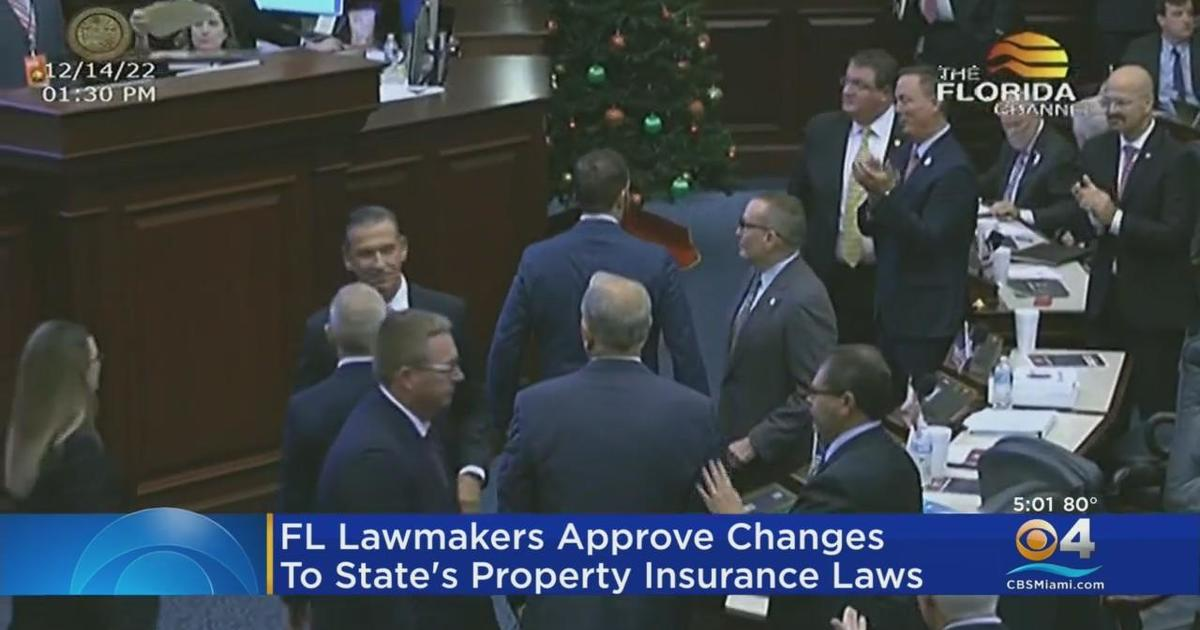Florida Insurance Reforms Boost Market Recovery in 2023
Florida insurance reforms are reshaping the landscape of the state’s property and casualty insurance market, aiming to curb fraudulent claims and stabilize homeowners insurance rates. Following significant legislative changes in 2022 and early 2023, the state is witnessing a slow but steady recovery from a crisis marked by rampant litigation and inflated premiums. Recent reports indicate a decline in claims-related litigation and an improvement in underwriting profitability, thanks in part to a relatively mild hurricane season in 2023. While the reforms are promising, homeowners should be cautious, as average premiums are expected to rise due to increasing replacement costs and higher reinsurance rates. As Florida continues to navigate the complexities of its insurance market, the focus remains on ensuring a sustainable future while maintaining protection against the impacts of natural disasters.
In recent years, Florida’s property insurance landscape has been in flux, driven by new regulations and efforts to address systemic issues within the industry. These insurance market reforms seek to combat the prevalence of fraudulent claims and the excessive litigation that has plagued homeowners, ultimately aiming for a more stable premium environment. As the state braces for potential challenges from an active hurricane season and other natural disasters, the legislative changes introduced are critical in fostering resilience within the insurance sector. The focus on improving the claims process and reducing costs associated with legal battles indicates a proactive approach to safeguarding policyholders’ interests. By tackling the root causes of rising homeowners insurance rates, Florida is making strides toward a more robust and equitable insurance market.
Understanding Florida Insurance Reforms and Their Impact
In recent years, Florida has seen significant legislative reforms aimed at curbing fraudulent claims and streamlining the insurance process. The reforms implemented in 2022 and early 2023 have focused on reducing abuse within the legal system, particularly concerning assignment-of-benefits claims, which have plagued the state’s property and casualty insurance market. These efforts are beginning to show positive outcomes, such as a notable decrease in claims-related litigation, which has historically driven up costs and complicated the insurance landscape. This revitalization of the insurance market is essential for ensuring that homeowners have access to affordable coverage amidst the challenges posed by Florida’s unique environmental risks.
While it will take time for the full effects of these reforms to manifest in policyholder premiums, early indicators suggest a positive trajectory. For instance, Florida’s defense and cost-containment expense ratio saw a significant drop in 2023, signaling a move towards a more manageable claims environment. As insurers adjust to these changes, homeowners can anticipate a slow but steady recovery in the insurance market. However, it is essential to remain cautious, as factors like rising replacement costs and higher reinsurance rates may continue to exert upward pressure on homeowners insurance rates in the coming years.
Frequently Asked Questions
What are the key Florida insurance reforms implemented in 2022 and 2023?
The key Florida insurance reforms enacted in 2022 and early 2023 focus on addressing legal system abuse and fraudulent assignment-of-benefits claims. These legislative changes aim to stabilize the state’s property and casualty insurance market, reducing claims-related litigation and improving underwriting profitability.
How have Florida insurance reforms impacted homeowners insurance rates?
While Florida insurance reforms have shown signs of helping the insurance market recover, homeowners should not expect a decrease in insurance rates for 2024. Despite some regional insurers filing for modest reductions, rising replacement costs and projected higher reinsurance costs are likely to push average premiums upward.
What is the role of fraudulent claims in Florida’s insurance crisis?
Fraudulent claims play a significant role in Florida’s insurance crisis, as the state accounts for only 15% of U.S. homeowners insurance claims but nearly 71% of homeowners claims-related litigation. The recent Florida insurance reforms aim to combat this issue, leading to a decrease in claims-related litigation.
How has the hurricane season affected Florida’s insurance market recovery?
The relatively mild 2023 Atlantic hurricane season has positively impacted Florida’s insurance market recovery. Insurers have benefited from lower claims costs, contributing to a net profit for the first time in seven years, although the upcoming 2024 hurricane season is projected to be ‘extremely active,’ which could pose new challenges.
What indicators show that Florida’s insurance market is recovering?
Indicators of recovery in Florida’s insurance market include a decrease in claims-related litigation, an improvement in underwriting profitability, and a notable drop in the defense and cost-containment expense (DCCE) ratio from 8.4 in 2022 to 3.1 in 2023. These signs suggest that the Florida insurance reforms are beginning to take effect.
What challenges does Florida face despite the recent insurance reforms?
Despite the positive impact of Florida insurance reforms, the state still faces challenges such as a projected ‘extremely active’ 2024 hurricane season, risks from wildfires, flooding, and severe convective storms, which can significantly affect the insurance market and premiums.
How do legislative changes in Florida aim to reduce litigation costs?
Legislative changes in Florida are designed to reduce litigation costs by addressing issues related to fraudulent claims and abuse of the legal system. By implementing these reforms, the state aims to lower the defense and cost-containment expense (DCCE) ratio, which is crucial for improving the overall financial health of the insurance market.
What can homeowners expect regarding homeowners insurance rates in Florida for 2024?
Homeowners in Florida can expect that while the recent insurance reforms and a mild hurricane season have improved industry performance, rates are still likely to increase in 2024 due to rising replacement costs and higher reinsurance costs, despite some regional insurers filing for modest reductions.
Why is Florida’s insurance market particularly sensitive to hurricane impacts?
Florida’s insurance market is particularly sensitive to hurricane impacts due to its geographic location and susceptibility to severe weather events. A single bad hurricane season can negate the benefits gained from mild seasons and lead to significant losses for insurers, further complicating the recovery efforts following recent reforms.
What is the significance of the DCCE ratio in evaluating Florida’s insurance reforms?
The DCCE ratio is significant in evaluating Florida’s insurance reforms as it measures the expenses associated with defending against claims and managing litigation. A lower DCCE ratio indicates a reduction in litigation costs, suggesting that the reforms are effectively addressing the issues that have plagued the insurance market.
| Key Point | Details |
|---|---|
| Legislative Reforms | Reforms implemented in 2022-2023 focus on reducing legal abuse and fraudulent claims. |
| Decrease in Litigation | Claims-related litigation has decreased significantly, with DCCE ratio dropping from 8.4 in 2022 to 3.1 in 2023. |
| Insurer Performance | Insurers reported net profits for the first time in seven years, aided by mild hurricane seasons and increased investment income. |
| Premiums Outlook | Despite improvements, homeowners should not expect lower premiums in 2024 due to rising replacement costs and reinsurance prices. |
| Claims Statistics | Florida represents 15% of U.S. homeowners insurance claims but accounts for 71% of related litigation. |
| Natural Challenges | Florida faces a projected ‘extremely active’ hurricane season, wildfires, and flooding threats. |
Summary
Florida insurance reforms have initiated a positive trend in the state’s property and casualty insurance market. The legislative changes aimed at curbing abuse and fraud are showing early signs of effectiveness, with a notable decrease in litigation and increased profitability for insurers. However, homeowners should remain cautious, as the benefits of these reforms may not lead to lower premiums in the immediate future, especially with the anticipated active hurricane season and rising costs. Overall, while the reforms are a step in the right direction, the full impact on insurance rates will take time to materialize.







